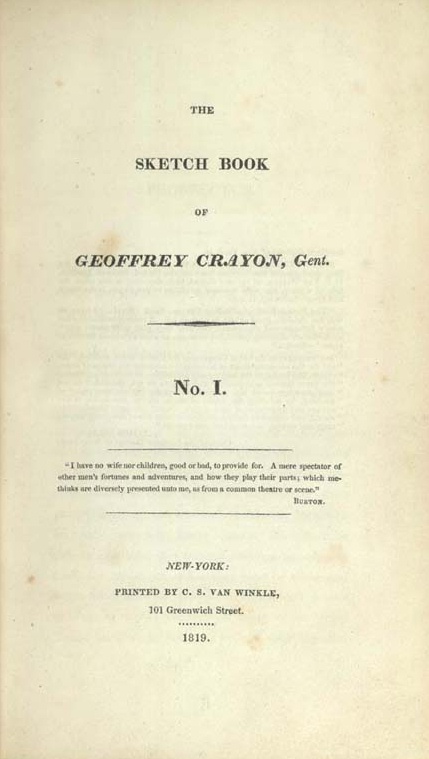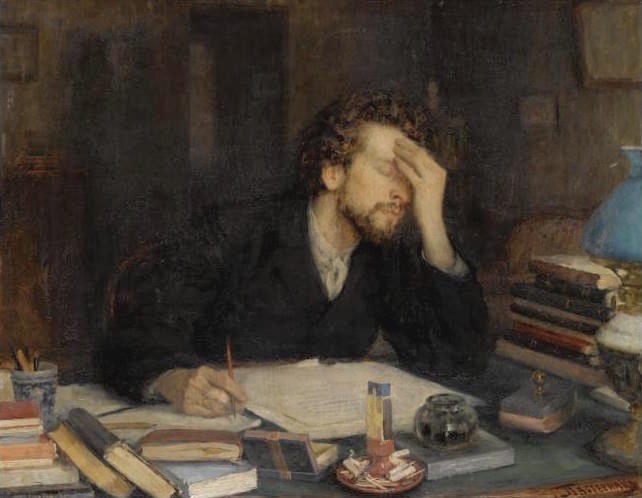|
Rip Van Winkle
"Rip Van Winkle" is a short story by the American author Washington Irving, first published in 1819. It follows a Dutch-American villager in colonial America named Rip Van Winkle who meets mysterious Dutchmen, imbibes their liquor and falls asleep in the Catskill Mountains. He awakes 20 years later to a very changed world, having missed the American Revolution. The concept is ancient, including the 70-year nap by Choni HaMeA-Gail. Irving, inspired by a conversation on nostalgia with his American expatriate brother-in-law, wrote his story while temporarily living in Birmingham, England. It was published in his collection, '' The Sketch Book of Geoffrey Crayon, Gent.'' While the story is set in New York's Catskill Mountains near where Irving later took up residence, he admitted, "When I wrote the story, I had never been on the Catskills." Plot Rip Van Winkle, a Dutch-American man with a habit of avoiding useful work, lives in a village at the foot of New York's Catskill Mounta ... [...More Info...] [...Related Items...] OR: [Wikipedia] [Google] [Baidu] |
John Quidor
John Quidor (January 26, 1801 – December 13, 1881) was an American painter of historical and literary subjects. He has about 35 known canvases, most of which are based on Washington Irving's stories about Dutch New York, drawing inspiration from the Hudson Valley and from such English painters as William Hogarth, Isaac Cruikshank, James Gillray, Joseph Wright of Derby, and George Morland. Biography John Quidor was born in 1801 in Tappan, New York. His family moved to New York City in 1810. In 1818, at the age 17, he began an apprenticeship with John Wesley Jarvis (where artist Henry Inman was also training), which was the only artistic training he received. The apprenticeship was not a success. Quidor felt that Jarvis did not pay sufficient attention to him, favoring Inman over him, leading Quidor in 1822 to sue Jarvis for breach of indenture, winning damages of $251.35 ($6,244.97 in 2022 dollars). Because he had to admit that he had received inadequate training, the lawsuit d ... [...More Info...] [...Related Items...] OR: [Wikipedia] [Google] [Baidu] |
Halve Maen
''Halve Maen'' (; en, Half Moon) was a Dutch East India Company '' vlieboot'' (similar to a carrack) that sailed into what is now New York Harbor in September 1609. She was commissioned by the VOC Chamber of Amsterdam in the Dutch Republic to covertly find a western passage to China. The ship was captained by Henry Hudson, an Englishman in the service of the Dutch Republic. In 1909, the Kingdom of the Netherlands presented the United States with a replica of ''Halve Maen'' to commemorate the 300th anniversary of Hudson's voyage; the replica was destroyed in a fire in 1934. Fifty years later, the New Netherland Museum commissioned a second replica. History ''Halve Maen'' sailed from Amsterdam to the Arctic, turning southwest to traverse the Atlantic Ocean to North America, then sailed from Newfoundland to the south in search of the Northwest Passage. In his 1625 book ''New World'', which contains invaluable extracts from Hudson's lost journal, Johannes de Laet, a director o ... [...More Info...] [...Related Items...] OR: [Wikipedia] [Google] [Baidu] |
Arthur
Arthur is a common male given name of Brythonic origin. Its popularity derives from it being the name of the legendary hero King Arthur. The etymology is disputed. It may derive from the Celtic ''Artos'' meaning “Bear”. Another theory, more widely believed, is that the name is derived from the Roman clan '' Artorius'' who lived in Roman Britain for centuries. A common spelling variant used in many Slavic, Romance, and Germanic languages is Artur. In Spanish and Italian it is Arturo. Etymology The earliest datable attestation of the name Arthur is in the early 9th century Welsh-Latin text ''Historia Brittonum'', where it refers to a circa 5th to 6th-century Briton general who fought against the invading Saxons, and who later gave rise to the famous King Arthur of medieval legend and literature. A possible earlier mention of the same man is to be found in the epic Welsh poem ''Y Gododdin'' by Aneirin, which some scholars assign to the late 6th century, though this is still a mat ... [...More Info...] [...Related Items...] OR: [Wikipedia] [Google] [Baidu] |
John Murray (1778–1843)
John Murray (27 November 1778 – 27 June 1843) was a Scottish publisher and member of the John Murray publishing house. He published works by authors such as Sir Walter Scott, Lord Byron, Jane Austen and Maria Rundell. Life The publishing house was founded by Murray's father, who died when Murray was only fifteen years old. During his adolescence, he ran the business with a partner Samuel Highley, but in 1803 the partnership was dissolved. Murray soon began to show the courage in literary speculation which earned for him later the name given him by Lord Byron of "the Anak of publishers", a reference to Anak in the Book of Numbers. In 1807 Murray took a share with Archibald Constable in publishing Sir Walter Scott's '' Marmion''. In the same year, he became part-owner of the ''Edinburgh Review'', although with the help of George Canning he launched in opposition the '' Quarterly Review'' in 1809, with William Gifford as its editor, and Scott, Canning, Robert Southey, John ... [...More Info...] [...Related Items...] OR: [Wikipedia] [Google] [Baidu] |
Walter Scott
Sir Walter Scott, 1st Baronet (15 August 1771 – 21 September 1832), was a Scottish novelist, poet, playwright and historian. Many of his works remain classics of European and Scottish literature, notably the novels '' Ivanhoe'', '' Rob Roy'', '' Waverley'', '' Old Mortality'', ''The Heart of Mid-Lothian'' and '' The Bride of Lammermoor'', and the narrative poems '' The Lady of the Lake'' and '' Marmion''. He had a major impact on European and American literature. As an advocate, judge and legal administrator by profession, he combined writing and editing with daily work as Clerk of Session and Sheriff-Depute of Selkirkshire. He was prominent in Edinburgh's Tory establishment, active in the Highland Society, long a president of the Royal Society of Edinburgh (1820–1832), and a vice president of the Society of Antiquaries of Scotland (1827–1829). His knowledge of history and literary facility equipped him to establish the historical novel genre as an exemplar of ... [...More Info...] [...Related Items...] OR: [Wikipedia] [Google] [Baidu] |
Birmingham, England
Birmingham ( ) is a city and metropolitan borough in the metropolitan county of West Midlands in England. It is the second-largest city in the United Kingdom with a population of 1.145 million in the city proper, 2.92 million in the West Midlands metropolitan county, and approximately 4.3 million in the wider metropolitan area. It is the largest UK metropolitan area outside of London. Birmingham is known as the second city of the United Kingdom. Located in the West Midlands region of England, approximately from London, Birmingham is considered to be the social, cultural, financial and commercial centre of the Midlands. Distinctively, Birmingham only has small rivers flowing through it, mainly the River Tame and its tributaries River Rea and River Cole – one of the closest main rivers is the Severn, approximately west of the city centre. Historically a market town in Warwickshire in the medieval period, Birmingham grew during the 18th century during the Mi ... [...More Info...] [...Related Items...] OR: [Wikipedia] [Google] [Baidu] |
Writer's Block
Writer's block is a condition, primarily associated with writing, in which an author is either unable to produce new work or experiences a creative slowdown. Mike Rose found that this creative stall is not a result of commitment problems or the lack of writing skills. The condition ranges from difficulty in coming up with original ideas to being unable to produce a work for years. Writer's block is not solely measured by time passing without writing. It is measured by time passing without productivity in the task at hand. History Throughout history, writer's block has been a documented problem.Clark, Irene. "Invention." ''Concepts in Composition: Theory and Practice in the Teaching of Writing''. 2nd ed. New York: Routledge, 2012. Professionals who have struggled with the affliction include authors such as F. Scott Fitzgerald and Joseph Mitchell, comic strip cartoonist Charles M. Schulz,Downey, Bill. ''Right Brain – Write ON!''. Englewood Cliffs: Prentice-Hall, Inc. 1984. ... [...More Info...] [...Related Items...] OR: [Wikipedia] [Google] [Baidu] |
United States Congress
The United States Congress is the legislature of the federal government of the United States. It is bicameral, composed of a lower body, the House of Representatives, and an upper body, the Senate. It meets in the U.S. Capitol in Washington, D.C. Senators and representatives are chosen through direct election, though vacancies in the Senate may be filled by a governor's appointment. Congress has 535 voting members: 100 senators and 435 representatives. The U.S. vice president has a vote in the Senate only when senators are evenly divided. The House of Representatives has six non-voting members. The sitting of a Congress is for a two-year term, at present, beginning every other January. Elections are held every even-numbered year on Election Day. The members of the House of Representatives are elected for the two-year term of a Congress. The Reapportionment Act of 1929 establishes that there be 435 representatives and the Uniform Congressional Redistricting Act requires t ... [...More Info...] [...Related Items...] OR: [Wikipedia] [Google] [Baidu] |
Flag Officer
A flag officer is a commissioned officer in a nation's armed forces senior enough to be entitled to fly a flag to mark the position from which the officer exercises command. The term is used differently in different countries: *In many countries, a flag officer is a senior officer of the navy, specifically those who hold any of the admiral ranks; the term may or may not include the rank of commodore. *In some countries, such as the United States, India, and Bangladesh it may apply to all armed forces, not just the navy. This means generals can also be considered flag officers. *In most Arab armies, ''liwa'' (Arabic: لواء), which can be translated as flag officer, is a specific rank, equivalent to a major general. However, "ensign" is debatably a more exact translation of the word. In principle, a flag officer commands several units called "flags" (or "ensigns") (i.e. brigades). General usage The generic title of flag officer is used in many modern navies and coast guards to d ... [...More Info...] [...Related Items...] OR: [Wikipedia] [Google] [Baidu] |




